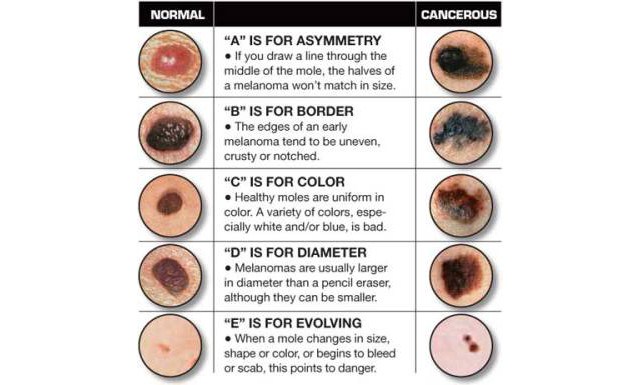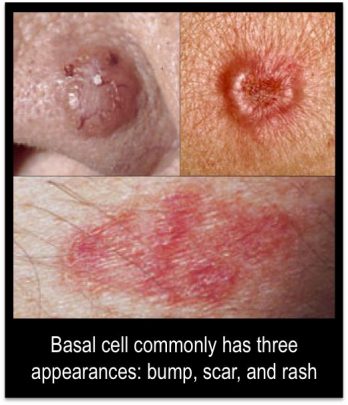How to tell if a spot on your body is suspiciously dangerous

Ahh… summer time. That means, there will be a lot of outdoor happy hours. The hot weather calls for an important reminder of skin cancer risk. Since you’re probably spending more time in the sun wearing less clothes, it’s important to take note of any new or different growths on your skin. But why the fuss? According to Aleksandar Sekulic, M.D., principal for Stand Up To Cancer’s Melanoma Research Alliance Dream Team and Mayo Clinic dermatologist, “Most skin cancers really are not symptomatic.” That means a cancerous spot won’t hurt, or even itch most of the time. “Occasionally people will say a red and scaly spot has become more red and tender, but most true cancers are asymptomatic,” Dr Sekulic told Self.
So how can you tell if a spot is suspicious?
Here are ten of the biggest signs, so you can be wary of any potential red flags.
How to spot Melanoma
Melanoma is the deadliest form of skin cancer. It is usually pigmented and will resemble a mole. “What we really look for is change, that’s the most appreciable thing,” Sekulic says. The American Academy of Dermatology uses the acronym ABCDE for how to recognise a melanoma—any time you notice a new mole or that an old mole looks different, look for these signs:
1. Asymmetry: If you cut it down the middle and one side looks different from the other, it’s asymmetrical.
2. Border: In a normal mole, the border should be smooth. If it is irregular, scalloped, or ragged? “That may be a warning sign,” Sekulic says.
3. Colour: If the mole is three or four different colours instead of one uniform colour, you should be suspicious.
4. Diameter: “If it’s larger than 6 millimeters, basically the size of a pencil eraser, we tend to look at it a little closer,” because melanoma is found disproportionately in larger moles.
5. Evolution: “Any change in an existing spot or mole is something that should be looked at further,” Sekulic says. That includes a change in size, shape, colour, or if the mole bleeds without being provoked. “Sometimes the spot may even start disappearing.” The rate of change is very relative, so it’s important to know what’s normal on your skin and when things change.

How to spot Basal cell carcinoma (BCC) and squamous cell carcinoma (SCC)
Basal cell carcinoma is the most common type of skin cancer and SCC is the second most common. “Many start as small, unsuspicious spots, and if they’re not treated they get bigger,” Sekulic says. Luckily, they’re both very curable and can be removed with surgery, though removals can cause scarring. In rare cases, they can grow deeper and spread. Here’s what you need to watch:
1. A red scaly patch: A red, itchy spot of skin that doesn’t resolve in a few weeks with moisturisation is most likely SCC. These might itch, but oftentimes do not, and can be easily confused for eczema.
2. A bump that won’t stop bleeding: This can look like a little bump or pimple that begins to ulcerate. A sore that continually bleeds, heals, and splits open again, is a common sign of BCC but could also be SCC.
3. A shiny bump: This nodule is usually pink, red, or white, but can also be tan, black, or brown and look like a regular mole.
4. A pink growth: The border will likely be slightly elevated and the centre indented and maybe even crusty.
5. A scar-like spot: This can be a sign of an aggressive form of BCC, so if you notice a white or yellow scar-like spot that appears shiny, see your derm ASAP.

The best thing is to be proactive about your skin health. Visit your doctor for regular skin checks. Get a full body scan once a year or more frequently if you have certain risk factors or a family history of skin cancer. If you ever see anything suspicious, get it checked out sooner rather than later. Remember, early detection is key.








 Proudly Australian owned and operated
Proudly Australian owned and operated